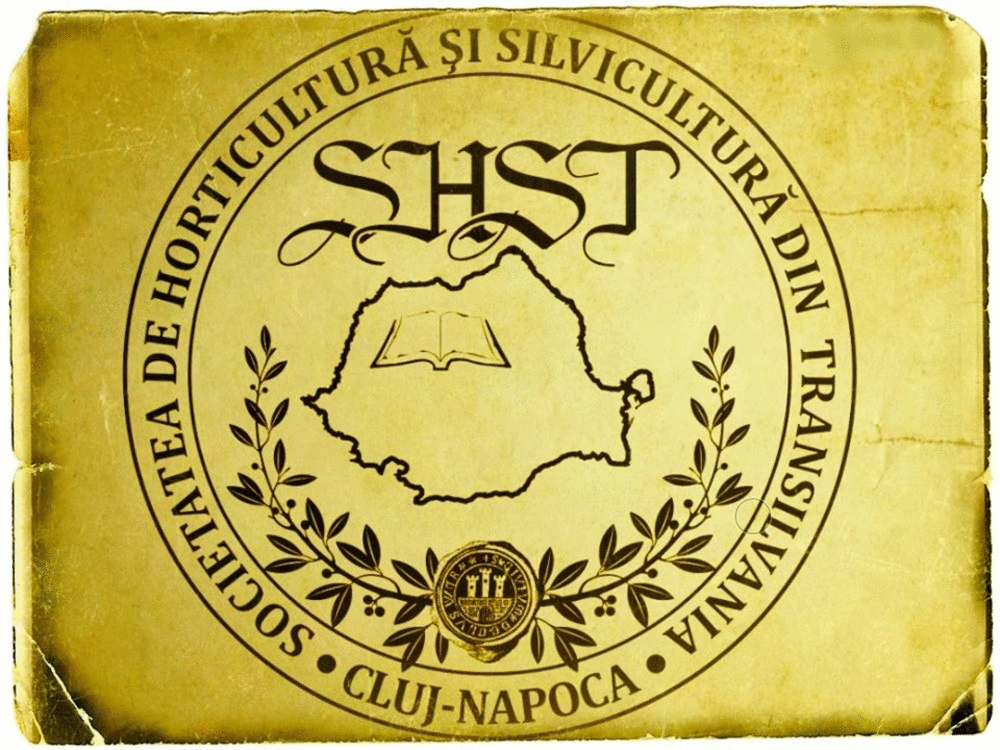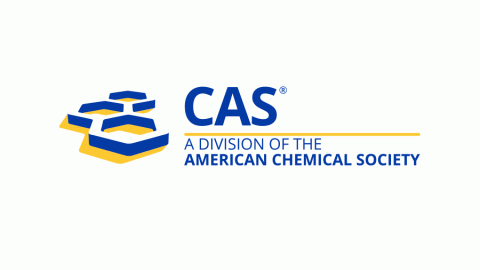Wickerhamomyces anomalus WO2 inoculation protects Suaeda fruticosa from salt stress by the stimulation of the production of carotenoids and sugars and the augmentation of sodium translocation
DOI:
https://doi.org/10.55779/nsb15211442Keywords:
carotenoids, growth, inoculation, PGPYAbstract
The objectives of this study were to test the strain Wickerhamomyces anomalus WO2 as a plant growth-promoting yeast (PGPY), to evaluate the effect of its inoculation on the growth and physiological performance of Suaeda fruticosa subjected to salt stress, and to understand by which mechanism the yeast can protect the plant from high salinity. The results showed that the strain is halophilic, and grows at salt concentrations of up to 15%. Salinity caused decreases in chlorophyll a, b, and T in both inoculated and non-inoculated S. fruticosa. A significant increase in carotenoids was observed in W. anomalus WO2 inoculated plants. Inoculation enhanced the production of proteins, polyphenols and flavonoids at 1% of salinity, and sugars at all concentrations of NaCl. Although Na+ and K+ were higher in the leaves of non-inoculated plants compared to inoculated ones, the correlation of sodium translocation factor (TF) with salinity was very strong positive only in the inoculated plants. The production of carotenoids had a very strong positive relationship with salinity in inoculated plants, and a very strong negative correlation in non-inoculated plants. Soluble sugars were very strongly positively correlated with salinity in both inoculated and non-inoculated plants. However, a strong positive correlation of sugars with carotenoids was observed only in inoculated plants. This strain proved to be a promising candidate as a PGPY under salt stress. This work amends the PGPY bank with new strains having interesting abilities to resist high concentrations of NaCl and which can be used in the future as a biofertilizer.
Metrics
References
Agamy R, Hashem M, Alamri S (2013). Effect of soil amendment with yeasts as bio-fertilizers on the growth and productivity of sugar beet. African Journal of Agricultural Research 7(49):6613-6623. https://doi.org/10.5897/AJAR12.1989
Aghaleh M, Niknam V, Ebrahimzadeh H, Razavi K (2009). Salt stress effects on growth, pigments, proteins and lipid peroxidation in Salicornia persica and S. europaea. Biologia Plantarum 53(2):243-248. https://doi.org/10.1007/s10535-009-0046-7
Aibeche C, Selami N, Zitouni-Haouar F E H, Oeunzar K, Addou A, Kaid-Harche M, Djabeur A (2022). Bioremediation potential and lead removal capacity of heavy metal-tolerant yeasts isolated from Dayet Oum Ghellaz Lake water (northwest of Algeria). International Microbiology 25(1):61-73. https://doi.org/10.1007/s10123-021-00191-z
Akcin A, Yalcin E (2016). Effect of salinity stress on chlorophyll, carotenoid content, and proline in Salicornia prostrata Pall and Suaeda prostrata Pall. subsp. prostrata (Amaranthaceae). Brazilian Journal of Botany 39(1):101-106. https://doi.org/10.1007/s40415-015-0218-y
Ann BM, Devesh S, Gothandam KM (2011). Effect of salt stress on expression of carotenoid pathway genes in tomato. Journal of Stress Physiology and Biochemistry 7(3):87-94.
Bahi K, Miara MD, Hadjadj-Aoul S (2020). Approche diachronique de la flore des bassins fermés halomorphes de la région d’Oran (NO Algérie) Diachronic analysis of the flora of the halomorphic closed basins in the region of Oran (NW Algeria). Bulletin de la Société Royale des Sciences de Liège. https://doi.org/10.25518/0037-9565.9763
Baker A J (1981). Accumulators and excluders‐strategies in the response of plants to heavy metals. Journal of Plant Nutrition 3(1-4):643-654. https://doi.org/10.1080/01904168109362867
Bankaji I, Cacador I, Sleimi N (2016). Assessing of tolerance to metallic and saline stresses in the halophyte Suaeda fruticosa: the indicator role of antioxidative enzymes. Ecological Indicators 64:297-308. https://doi.org/10.1016/j.ecolind.2016.01.020
Bonatsou S, Benítez A, Rodríguez-Gómez F, Panagou E Z, Arroyo-López F. N (2015). Selection of yeasts with multifunctional features for application as starters in natural black table olive processing. Food Microbiology 46:66-73. https://doi.org/10.1016/j.fm.2014.07.011
Bradford MM (1976). A rapid and sensitive method for the quantitation of microgram quantities of protein utilizing the principle of protein-dye binding. Analytical Biochemistry 72(1-2):248-254. https://doi.org/10.1016/0003-2697(76)90527-3
Breierová E, Stratilová E, Šajbidor J (1996). Production of extracellular polymers by yeast-like genera Dipodascus and Dipodascopsis under NaCl stress. Folia Microbiologica 41(3):257-263. https://doi.org/10.1007/BF02814627
Breierová E, Vajcziková I, Sasinková V, Stratilová E, Fišera M, Gregor T, Šajbidor J (2002). Biosorption of cadmium ions by different yeast species. Zeitschrift für Naturforschung C 57(7-8):634-639. https://doi.org/10.1515/znc-2002-7-815
Breierova E, Čertik M, Kovarova A, Gregor T (2008). Biosorption of nickel by yeasts in an osmotically unsuitable environment. Zeitschrift fur Naturforschung C 63(11-12):873-878. https://doi.org/10.1515/znc-2008-11-1215
Chang CC, Yang M, Wen H, Chern JC (2002). Estimation of total flavonoid content in propolis by two complementary colorimetric methods. Journal of Food and Drug Analysis 10(3). https://doi.org/10.38212/2224-6614.2748
Chauhan P S, Lata C, Tiwari S, Chauhan A S, Mishra S K, Agrawal L, ... Nautiyal C S (2019). Transcriptional alterations reveal Bacillus amyloliquefaciens-rice cooperation under salt stress. Scientific Reports 9(1):1-13. https://doi.org/10.1038/s41598-019-48309-8
Chennappa G, Naik MK, Udaykumar N, Vidya M, Sreenivasa MY, Amaresh YS, Mathad PF (2019). Plant growth promoting microbes: A future trend for environmental sustainability. In: New and Future Developments in Microbial Biotechnology and Bioengineering. Elsevier pp 163-178. https://doi.org/10.1016/B978-0-12-818258-1.00010-8
Egamberdieva D, Wirth S, Bellingrath-Kimura SD, Mishra J, Arora NK (2019). Salt-tolerant plant growth promoting rhizobacteria for enhancing crop productivity of saline soils. Frontiers in Microbiology 10:2791. https://doi.org/10.3389/fmicb.2019.02791
Enebe MC, Babalola OO (2018). The influence of plant growth-promoting rhizobacteria in plant tolerance to abiotic stress: a survival strategy. Applied Microbiology and Biotechnology 102(18):7821-7835. https://doi.org/10.1007/s00253-018-9214-z
Etesami H, Beattie GA (2018). Mining halophytes for plant growth-promoting halotolerant bacteria to enhance the salinity tolerance of non-halophytic crops. Frontiers in Microbiology 9:148. https://doi.org/10.3389/fmicb.2018.00148
Fahad S, Hussain S, Matloob A, Khan F A, Khaliq A, Saud S, ... Huang J (2015). Phytohormones and plant responses to salinity stress: a review. Plant growth regulation 75(2):391-404. https://doi.org/10.1007/s10725-014-0013-y
FAO (2021). Global Map of Salt-affected Soils (GSASmap). https://www.fao.org/soils-portal/data-hub/soil-maps-and-databases/global-map-of-salt-affected-soils/en/
Feng G, Zhang F, Li X, Tian C, Tang C, Rengel Z (2002). Improved tolerance of maize plants to salt stress by arbuscular mycorrhiza is related to higher accumulation of soluble sugars in roots. Mycorrhiza 12(4):185-190. https://doi.org/10.1007/s00572-002-0170-0
Fernandez-San Millan A, Farran I, Larraya L, Ancin M, Arregui L M, Veramendi J (2020). Plant growth-promoting traits of yeasts isolated from Spanish vineyards: Benefits for seedling development. Microbiological Research 237:126480. https://doi.org/10.1016/j.micres.2020.126480
Flowers T J, Munns R, Colmer T D (2015). Sodium chloride toxicity and the cellular basis of salt tolerance in halophytes. Annals of botany 115(3):419-431. https://doi.org/10.1093/aob/mcu217
Fu SF, Sun PF, Lu HY, Wei JY, Xiao HS, Fang WT, ... Chou JY (2016). Plant growth-promoting traits of yeasts isolated from the phyllosphere and rhizosphere of Drosera spatulata Lab. Fungal Biology 120(3):433-448. https://doi.org/10.1016/j.funbio.2015.12.006
Gaballah MS, Gomaa AM (2004). Performance of Faba Bean varieties grown under salinity. Journal of Applied Sciences 4(1):93-99. https://doi.org/10.3923/jas.2004.93.99
Giri B, Kapoor R, Mukerji KG (2007). Improved tolerance of Acacia nilotica to salt stress by arbuscular mycorrhiza, Glomus fasciculatum may be partly related to elevated K/Na ratios in root and shoot tissues. Microbial Ecology 54(4):753-760. https://doi.org/10.1007/s00248-007-9239-9
Gomes FC, Safar SV, Marques AR, Medeiros AO, Santos ARO, Carvalho C, ... Rosa CA (2015). The diversity and extracellular enzymatic activities of yeasts isolated from water tanks of Vriesea minarum, an endangered bromeliad species in Brazil, and the description of Occultifur brasiliensis fa, sp. nov. Antonie van Leeuwenhoek 107(2):597-611. https://doi.org/10.1007/s10482-014-0356-4
Gul Jan F, Hamayun M, Hussain A, Jan G, Iqbal A, Khan A, Lee I J (2019). An endophytic isolate of the fungus Yarrowia lipolytica produces metabolites that ameliorate the negative impact of salt stress on the physiology of maize. BMC Microbiology 19(1):1-10. https://doi.org/10.1186/s12866-018-1374-6
Gupta B, Huang B (2014). Mechanism of salinity tolerance in plants: physiological, biochemical, and molecular characterization. International Journal of Genomics 701596. https://doi.org/10.1155/2014/701596
Hameed A, Hussain T, Gulzar S, Aziz I, Gul B, Khan M A (2012). Salt tolerance of a cash crop halophyte Suaeda fruticosa: biochemical responses to salt and exogenous chemical treatments. Acta Physiologiae Plantarum 34(6):2331-2340. https://doi.org/10.1007/s11738-012-1035-6
Hammer EC, Nasr H, Pallon J, Olsson PA, Wallander H (2011). Elemental composition of arbuscular mycorrhizal fungi at high salinity. Mycorrhiza 21(2):117-129. https://doi.org/10.1007/s00572-010-0316-4
Han L, Li J L, Jin M, Su Y H (2015). Transcriptome analysis of Arabidopsis seedlings responses to high concentrations of glucose. Genetic Molecular Research 14(2):4784-801. https://doi.org/10.4238/2015.may.11.11
Hanana M, Hamrouni L, Cagnac O, Blumwald E (2011). Mécanismes et stratégies cellulaires de tolérance à la salinité (NaCl) chez les plantes. Environmental Reviews 19:121-140. https://doi.org/10.1139/a11-003
Hayat AEH (2007). Physiological studies on Hibiscus sabdariffa L. production in new reclamated soils. M.Sc. thesis, Faculty of Agriculture, Zagazig University.
Hesham AEL, Wang Z, Zhang Y, Zhang J, Lv W, Yang M (2006). Isolation and identification of a yeast strain capable of degrading four and five ring aromatic hydrocarbons. Annals of Microbiology 56(2):109-112. https://doi.org/10.1007/BF03174990
Ikram M, Ali N, Jan G, Iqbal A, Hamayun M, Jan FG, ... Lee IJ (2019). Trichoderma reesei improved the nutrition status of wheat crop under salt stress. Journal of Plant Interactions 14(1):590. https://doi.org/10.1080/17429145.2019.1684582
Kasim WA, Gaafar RM, Abou-Ali RM, Omar MN, Hewait HM (2016). Effect of biofilm forming plant growth promoting rhizobacteria on salinity tolerance in barley. Annals of Agricultural Sciences 61(2):217-227. https://doi.org/10.1016/j.aoas.2016.07.003
Katsenios N, Andreou V, Sparangis P, Djordjevic N, Giannoglou M, Chanioti S, ... Efthimiadou A (2021). Evaluation of plant growth promoting bacteria strains on growth, yield and quality of industrial tomato. Microorganisms 9(10):2099. https://doi.org/10.3390/microorganisms9102099
Khalil SE, Ismael EG (2010). Growth, yield and seed quality of Lupinus termis as affected by different soil moisture levels and different ways of yeast application. Journal of American Science 6:141-153.
Khan MA, Ungar IA, Showalter AM (2000). The effect of salinity on the growth, water status, and ion content of a leaf succulent perennial halophyte, Suaeda fruticosa (L.) Forssk. Journal of Arid Environments 45(1):73-84. https://doi.org/10.1006/jare.1999.0617
Kiani R, Arzani A, Mirmohammady Maibody SAM (2021). Polyphenols, flavonoids, and antioxidant activity involved in salt tolerance in wheat, Aegilops cylindrica and their amphidiploids. Frontiers in Plant Science 12:493. https://doi.org/10.3389/fpls.2021.646221
Krishnan S R, Prabhakaran N, Ragunath K S, Srinivasan R, Ponni K K, Balaji G, ... & Latha K (2020). Unearthing the genes of plant-beneficial marine yeast-Wickerhamomyces anomalus strain MSD1. bioRxiv. https://doi.org/10.1101/2020.12.22.424010
Lambert J (1975). Une technique de minéralisation rapide des végétaux en vue du dosage en série de N, P, K, Na, Ca, Mg, Fe, etc. Note analytique.
Lanza M, Haro R, Conchillo L B, Benito B (2019). The endophyte Serendipita indica reduces the sodium content of Arabidopsis plants exposed to salt stress: fungal ENA ATPases are expressed and regulated at high pH and during plant co-cultivation in salinity. Environmental Microbiology 21(9):3364-3378. https://doi.org/10.1111/1462-2920.14619
Latowski D, Kuczyńska P, Strzałka K (2011). Xanthophyll cycle–a mechanism protecting plants against oxidative stress. Redox Report 16(2):78-90. https://doi.org/10.1179/174329211X13020951739938
Li C, Ji J, Wang G, Li Z, Wang Y, Fan Y (2020). Over-expression of LcPDS, LcZDS, and LcCRTISO, genes from wolfberry for carotenoid biosynthesis, enhanced carotenoid accumulation, and salt tolerance in tobacco. Frontiers in Plant Science 11:119. https://doi.org/10.3389/fpls.2020.00119
Martorell MM, Fernández PM, Fariña JI, Figueroa LI (2012). Cr (VI) reduction by cell-free extracts of Pichia jadinii and Pichia anomala isolated from textile-dye factory effluents. International Biodeterioration & Biodegradation 71:80-85. https://doi.org/10.1016/j.ibiod.2012.04.007
Minhas PS, Ramos TB, Ben-Gal A, Pereira LS (2020). Coping with salinity in irrigated agriculture: Crop evapotranspiration and water management issues. Agricultural Water Management 227:105832. https://doi.org/10.1016/j.agwat.2019.105832
Mona SA, Hashem A, Abd_Allah EF, Alqarawi AA, Soliman DWK, Wirth S, Egamberdieva D (2017). Increased resistance of drought by Trichoderma harzianum fungal treatment correlates with increased secondary metabolites and proline content. Journal of Integrative Agriculture 16(8):1751-1757. https://doi.org/10.1016/S2095-3119(17)61695-2
Nadeem SM, Ahmad M, Zahir ZA, Javaid A, Ashraf M (2014). The role of mycorrhizae and plant growth promoting rhizobacteria (PGPR) in improving crop productivity under stressful environments. Biotechnology Advances 32(2):429-448. https://doi.org/10.1016/j.biotechadv.2013.12.005
Padilla B, Gil JV, Manzanares P (2018). Challenges of the non-conventional yeast Wickerhamomyces anomalus in winemaking. Fermentation 4(3):68. https://doi.org/10.3390/fermentation4030068
Praphailong W, Fleet G H (1997). The effect of pH, sodium chloride, sucrose, sorbate and benzoate on the growth of food spoilage yeasts. Food Microbiology 14(5):459-468. https://doi.org/10.1006/fmic.1997.0106
Santos CV (2004). Regulation of chlorophyll biosynthesis and degradation by salt stress in sunflower leaves. Scientia Horticulturae 103(1):93-99. https://doi.org/10.1016/j.scienta.2004.04.009
Sellami S, Le Hir R, Thorpe MR, Vilaine F, Wolff N, Brini F, Dinant S (2019). Salinity effects on sugar homeostasis and vascular anatomy in the stem of the Arabidopsis thaliana inflorescence. International Journal of Molecular Sciences 20(13):3167. https://doi.org/10.3390/ijms20133167
Shruthi B, Deepa N, Somashekaraiah R, Adithi G, Divyashree S, Sreenivasa MY (2022). Exploring biotechnological and functional characteristics of probiotic yeasts: A review. Biotechnology Reports e00716. https://doi.org/10.1016/j.btre.2022.e00716
Sidhoum W, Fortas Z (2019). The beneficial role of indigenous arbuscular mycorrhizal fungi in phytoremediation of wetland plants and tolerance to metal stress. Archives of Environmental Protection 45(1):103-114. https://doi.org/10.24425/aep.2019.125916
Singleton V L, Orthofer R, Lamuela-Raventós R M (1999). [14] Analysis of total phenols and other oxidation substrates and antioxidants by means of folin-ciocalteu reagent. In: Methods in Enzymology. Academic Press 299:152-178. https://doi.org/10.1016/S0076-6879(99)99017-1
Solfanelli C, Poggi A, Loreti E, Alpi A, Perata P (2006). Sucrose-specific induction of the anthocyanin biosynthetic pathway in Arabidopsis. Plant Physiology 140(2): 637-646. https://doi.org/10.1104/pp.105.072579
Srinivasan R, Krishnan SR, Ragunath KS, Ponni KK, Balaji G, Prabhakaran N, ... Latha K (2022). Prospects of utilizing a multifarious yeast (MSD1), isolated from South Indian coast as an agricultural input. Biocatalysis and Agricultural Biotechnology 39:102232. https://doi.org/10.1016/j.bcab.2021.102232
Stino RG, Mohsen AT, Maksoud MA, El-Migeed MMMA, Gomaa AM, Ibrahim AY (2009). Bio-organic fertilization and its impact on apricot young trees in newly reclaimed soil. American-Eurasian Journal of Agricultural and Environmental Science 6(1):62-69.
Turner NC (1981). Techniques and experimental approaches for the measurement of plant water status. Plant and Soil 58(1):339-366. https://doi.org/10.1007/BF02180062
Yamaguchi T, Hamamoto S, Uozumi N (2013). Sodium transport system in plant cells. Frontiers in Plant Science 4:410. https://doi.org/10.3389/fpls.2013.00410
Yemm EW, Willis A (1954). The estimation of carbohydrates in plant extracts by anthrone. Biochemical Journal 57(3):508. https://doi.org/10.1042/bj0570508
Young AJ (1991). The photoprotective role of carotenoids in higher plants. Physiologia Plantarum 83(4):702-708. https://doi.org/10.1111/j.1399-3054.1991.tb02490.x
Downloads
Published
How to Cite
Issue
Section
License
Copyright (c) 2023 Chahrazed AIBECHE, Warda SIDHOUM , Omar KHELIL, Fadila CHERIFI, Kheira ERROUANE, Nawel SELAMI, Slimane CHOUBANE, Abderrahmane SENINA, Chahinez MARDHI, Abderrezak DJABEUR

This work is licensed under a Creative Commons Attribution 4.0 International License.
Papers published in Notulae Scientia Biologicae are Open-Access, distributed under the terms and conditions of the Creative Commons Attribution License.
© Articles by the authors; licensee SMTCT, Cluj-Napoca, Romania. The journal allows the author(s) to hold the copyright/to retain publishing rights without restriction.
License:
Open Access Journal - the journal offers free, immediate, and unrestricted access to peer-reviewed research and scholarly work, due SMTCT supports to increase the visibility, accessibility and reputation of the researchers, regardless of geography and their budgets. Users are allowed to read, download, copy, distribute, print, search, or link to the full texts of the articles, or use them for any other lawful purpose, without asking prior permission from the publisher or the author.













.png)















